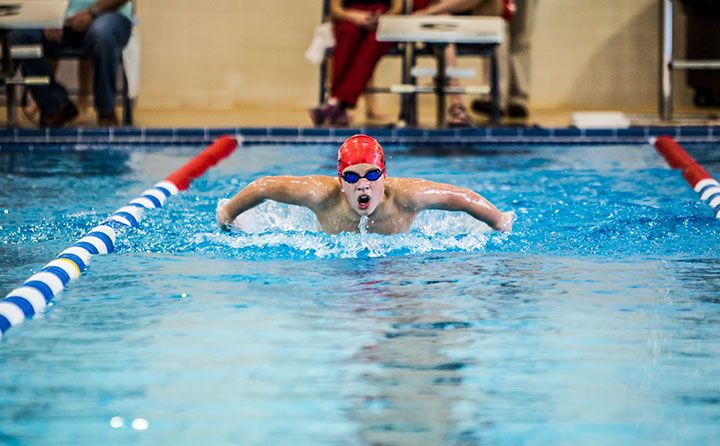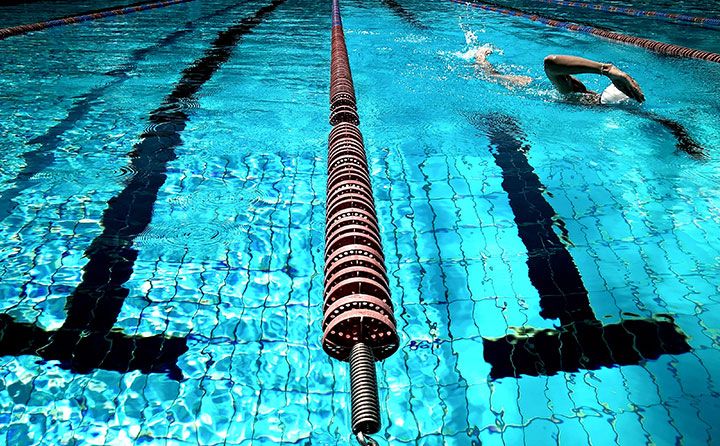Share:
Take it offline!
This Education in Motion resource is also available as a printable PDF.
Download PDF
Swimming has always been a prominent Paralympic sport and is one of the few disciplines to have enjoyed continuous representation since the first games of 1960 in Rome.
Benefits of adapted swimming
It is thought that the ancient Egyptians were the first to understand the advantages of using aquatic activities for therapeutic purposes. Today the benefits are clear with adapted swimming therapy providing improved independence and safety in the water; aerobic exercise to work and tone all the muscles of the body; and strength and resistance training - all whilst offering a relaxing effect. Swimming is a holistic sport that can improve basic physical capabilities, whilst providing an opportunity for the physical and/or psychological rehabilitation and recovery of many people. It can provide a great way to socialise, boost confidence, highlight personal potential and help to overcome fears and break through personal barriers.

Categories and classification
Athletes of all disability groups can compete in the same styles and categories as conventional swimming - freestyle, breaststroke, backstroke and butterfly - and at practically equal distances (in a 50 metre pool with 50/100/400 metre races).
Adapted swimming athletes are classified according to how their disability affects them when practicing a particular swimming style. The categories of S1 to S10 are for swimmers with a physical disability, cerebral palsy being S1 for a greater severity and S10 for the less affected. Category S11 is reserved for the blind, S12 and S13 for the visually impaired and S14 for the intellectually disabled.
The "S" indicates freestyle, backstroke and butterfly events, while "SB" is used for breaststroke. In this category, some physically disabled swimmers compete in a lower class since more leg propulsion is needed. This same rule is used for the category "SM" (medley or mixed events).

About accessible swimming pools
In the most part swimming pools require very little adaptation to enable disabled swimmers to be able to use them. Some swimmers may require a hoist to lower them into the water, whilst. Swimmers with visual impairments may benefit from brightly coloured lane markers and in the case of competitive swimmers ‘tappers’ – a trained guide who will ‘tap’ the swimmer when they need to turn.
The way an athlete begins their race may be the most noticeable difference in adapted swimming. This can be done from three positions: standing, sitting, or directly from the water. Adapted swimming pools will have textured edges, walls and floors and swimmers with visual impairments will be warned of the distance they are from these so that they can accurately and safely make turns.
Paralympic swimmers in history
The most celebrated Paralympic athlete of all time is the American Trischa Zorn, a visually impaired swimmer with a record of 51 medals across 7 Paralympics (41 gold, 9 silver and 5 bronze). She set an unprecedented record of winning 12 gold medals at the 1988 Seoul Paralympics.
Another athlete who has set records is Béatrice Hess from France, a swimmer whose cerebral palsy did not stop her from winning the fitting nickname of ‘Thorpedo’: in Sydney, she broke 9 world records. Both are followed by the young Australian Jacqueline Freney, already considered one of the best swimmers in history and who won 8 gold medals at the 2012 London Olympics.
Another would be Teresa Perales from Spain. After neuropathy that paralysed her from the waist down, she learned to swim - an ‘adventure’ that allowed her to participate in the last 4 Paralympics and win 26 medals (7 gold, 9 silver and 10 bronze).
Whether practiced for fun or at a professional level, swimming is just one of the ways that you can #livewithoutlimits. Check out Sunrise Medicals range of manual and powered wheelchairs that help you to live your life without limits.